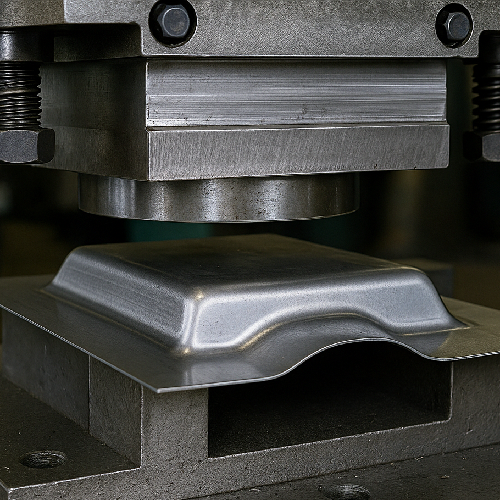Metal stamping forming is a highly efficient manufacturing process used to convert flat metal sheets into specific shapes through the use of dies and stamping presses. This process plays a critical role in producing components for industries such as automotive, aerospace, electronics, and consumer appliances.
Key Components of the Metal Stamping Forming Process
1. Die and Tooling Design
- Dies are customized tools used to shape metal parts during the metal stamping forming process.
- Tooling includes punches and dies, which are essential for creating high-precision parts.
2. Stamping Press Types
- Mechanical presses are commonly used for high-speed applications.
- Hydraulic presses offer better control and are ideal for complex metal stamping forming tasks.
3. Material Selection
- Common materials include stainless steel, aluminum, copper, and brass.
- Material properties directly impact the efficiency and quality of the metal stamping forming process.
4. Blanking and Punching
- Blanking cuts the workpiece from the sheet, while punching removes unwanted material.
- These steps are typically the first phase of metal stamping forming.
5. Bending and Forming
- This phase shapes the blank into a three-dimensional form, utilizing techniques like air bending, bottoming, or coining.
- Accurate forming ensures part integrity and dimensional accuracy.
Advantages of Metal Stamping Forming
1. High Precision and Consistency
- Metal stamping forming produces parts with tight tolerances and repeatable accuracy.
- Ideal for mass production where consistency is key.
2. Cost-Effective for High Volumes
- Once the die is created, the per-part cost drops significantly.
- Suitable for long production runs with minimal material waste.
3. Speed and Efficiency
- Modern stamping presses can produce hundreds of parts per minute.
- Metal stamping forming dramatically reduces production cycle times.
4. Design Flexibility
- Complex geometries can be achieved with advanced die designs.
- Supports multi-functional parts in a single metal stamping forming step.
5. Material Optimization
- The process minimizes scrap and utilizes sheet metal efficiently.
- Lightweight and durable parts can be achieved with optimized material usage.
Common Applications of Metal Stamping Forming
1. Automotive Industry
- Chassis, brackets, and structural components are produced using metal stamping forming.
- Ensures high strength and safety for vehicle parts.
2. Aerospace Components
- Critical aerospace components require high strength-to-weight ratios.
- Metal stamping forming provides the precision needed for these parts.
3. Consumer Electronics
- Housings, connectors, and shielding components are manufactured through this process.
- Supports miniaturization and complex part requirements.
4. Medical Devices
- Metal stamping forming ensures clean, accurate parts for surgical tools and implants.
- Stainless steel and titanium are commonly used.
5. Home Appliances
- Covers, brackets, and panels in appliances rely on efficient forming methods.
- Aesthetic and functional parts are made to high standards.
Quality Control in Metal Stamping Forming
1. Inspection and Testing
- Dimensional checks, hardness testing, and visual inspections are routine.
- Ensures every part meets strict quality standards.
2. In-Process Monitoring
- Sensors and feedback systems detect anomalies in real-time.
- Helps prevent defective parts during the metal stamping forming cycle.
3. Tool Maintenance
- Regular maintenance ensures dies remain sharp and accurate.
- Extends tool life and maintains part quality.
Future Trends in Metal Stamping Forming
1. Automation and Robotics
- Robotic feeders and sorters enhance productivity.
- Automated systems reduce human error in metal stamping forming.
2. Smart Manufacturing Integration
- IoT-enabled machines provide real-time data for process optimization.
- Data analytics help improve efficiency and reduce downtime.
3. Advanced Materials
- Use of composites and high-strength alloys is increasing.
- Metal stamping forming adapts to these newer materials for superior performance.
4. Environmental Sustainability
- Improved waste management and energy-efficient presses support green manufacturing.
- Eco-friendly lubricants and recycling practices are becoming standard.

